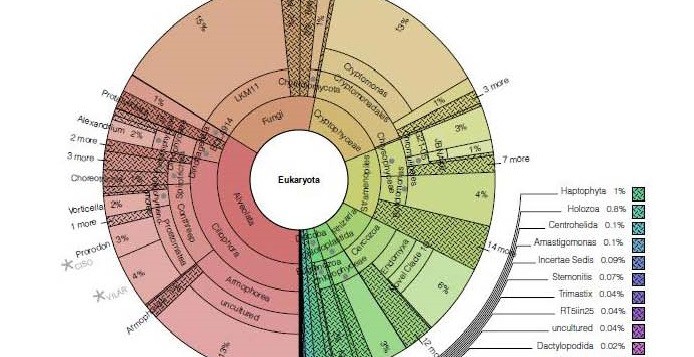Triadó-Margarit, Xavier, Casamayor, Emilio O. . Environmental Microbiology Reports : doi:10.1111/1758-2229.12324 (2015) DIGITAL.CSIC
Diversity of small protists was studied in sulfidic and anoxic (euxinic) stratified karstic lakes and coastal lagoons by 18S rRNA gene analyses. We hypothesized a major sulfide effect, reducing protist diversity and richness with only a few specialized populations adapted to deal with low-redox conditions and high-sulfide concentrations. However, genetic fingerprinting suggested similar ecological diversity in anoxic and sulfurous than in upper oxygen rich water compartments with specific populations inhabiting euxinic waters. Many of them agreed with genera previously identified by microscopic observations, but also new and unexpected groups were detected. Most of the sequences matched a rich assemblage of Ciliophora (i.e., Coleps, Prorodon, Plagiopyla, Strombidium, Metopus, Vorticella and Caenomorpha, among others) and algae (mainly Cryptomonadales). Unidentified Cercozoa, Fungi, Stramenopiles and Discoba were recurrently found. The lack of GenBank counterparts was higher in deep hypolimnetic waters and appeared differentially allocated in the different taxa, being higher within Discoba and lower in Cryptophyceae. A larger number of populations than expected were specifically detected in the deep sulfurous waters, with unknown ecological interactions and metabolic capabilities.


